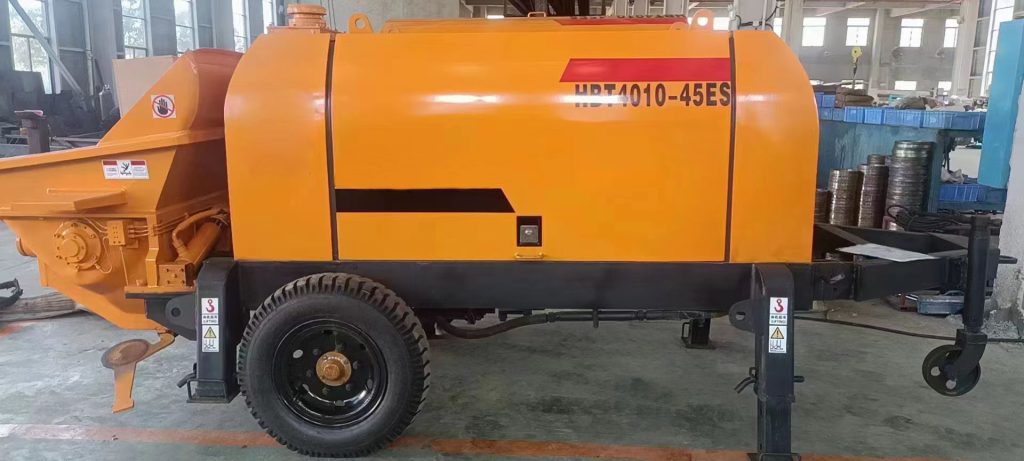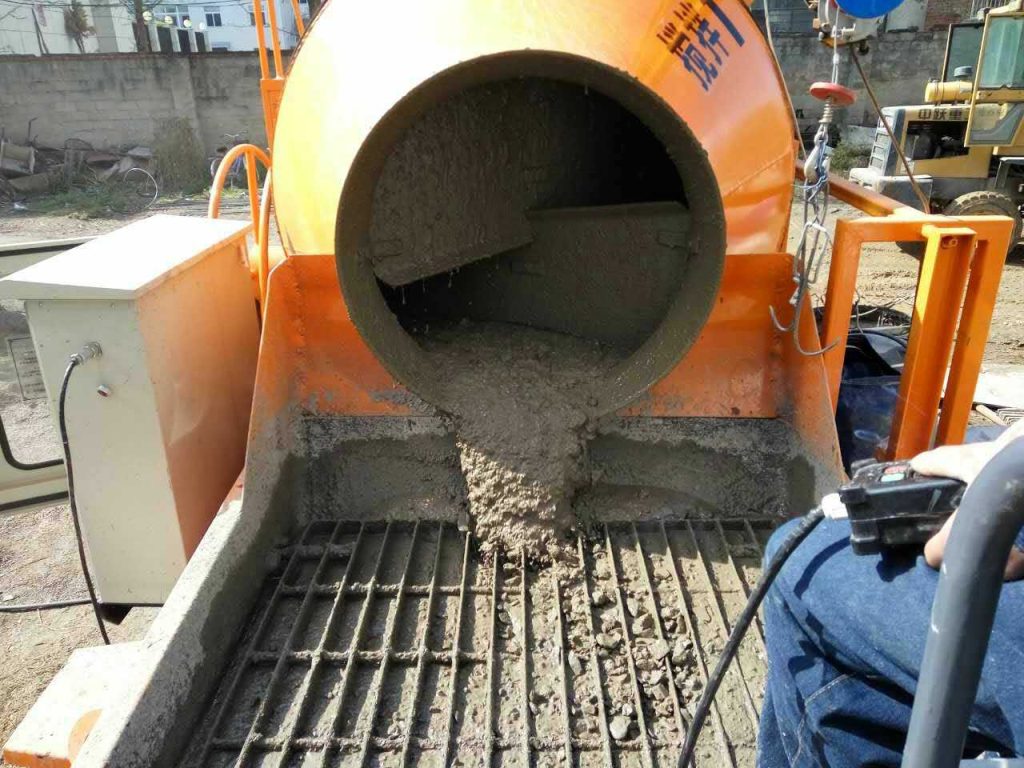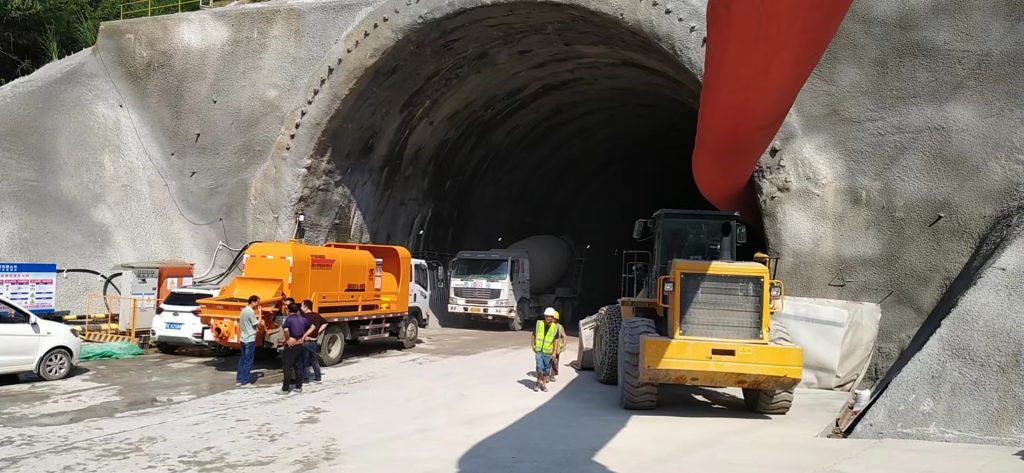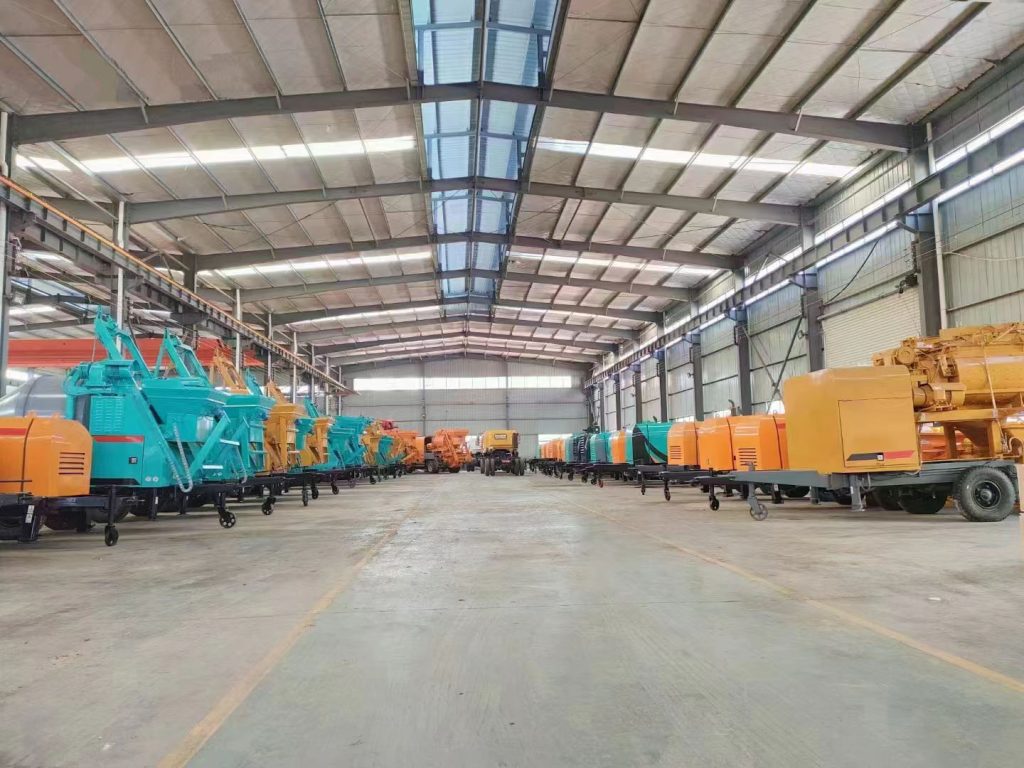A fixed concrete conveying pump, also known as a concrete pump, is mainly composed of a pump body and a conveying pipe. It is a kind of machinery that uses pressure to continuously transport concrete along a pipeline.

I. Structure and composition
- Pump body: Is the core part of the entire equipment, including the main pump and distribution valve.The main pump is responsible for inhaling and discharging the concrete, and its power comes from the engine or motor.The distribution valve is used to control the flow and pressure to ensure that the concrete can be accurately transported to the designated location.
- Conveyor pipe: Composed of steel pipe and rubber hose, it is used to transport concrete from the pump body to the desired location.Steel pipes are mainly used to support and fix pipes, while rubber hoses can be bent and retracted to adapt to different conveying distances and angles.
- Hydraulic system: As the power source of the conveying pump, it consists of an engine or motor, a hydraulic pump, a hydraulic fuel tank, a hydraulic motor, etc.By driving the hydraulic pump, high-pressure oil is generated and transmitted to the pump body, thereby driving the pump body to work.
- Electrical control system: It consists of an electric control box, electrical control components, signal lights, etc., which controls the start, stop, steering and flow parameters of the conveying pump to ensure the safe and stable operation of the equipment.
- Cooling system: Used to maintain the normal operating temperature of the equipment and to prevent damage to the equipment due to overheating.
II. Principle of operation
The working principle of concrete transfer pump is to transfer concrete from one place to another through the synergistic action of pump body, transfer pipeline, hydraulic system, electrical control system and cooling system and other components. The engine or motor provides the power to drive the pump body through the hydraulic system, and the main pump sucks and pressurizes the concrete and conveys it to the designated location through the conveying pipeline. The electrical control system is responsible for monitoring and controlling the whole conveying process to ensure the safety and stability of the equipment.

III. Performance characteristics
- Efficient delivery: The use of advanced pumping technology and distribution valve design can achieve efficient and continuous concrete transportation.
- Strong adaptability: The conveying pipeline is composed of steel pipes and rubber hoses, which can adapt to different conveying distances and angles.
- Safe and reliable: Multiple protection mechanisms of the electrical control system and the hydraulic system ensure the safety and reliability of the equipment during operation.
- Easy maintenance: The equipment structure is reasonably designed to facilitate daily maintenance and maintenance.
IV. Application Scenarios
Fixed concrete pumps are widely used in housing construction, bridges, tunnels, water conservancy and other engineering fields.In the construction of high-rise buildings, it can realize high-altitude concrete transportation, avoid transportation difficulties and high-altitude work of workers, and improve work efficiency and safety.In the construction of municipal projects, such as the construction of roads, bridges and other projects, it can also transport concrete to the desired location to improve construction efficiency and quality.

V. Safe Operating Procedures
In order to ensure the safe operation of stationary concrete pumps, the following safety procedures need to be observed:
- The equipment should be placed on solid and level ground, with the legs lowered and the body set down smoothly.
- Before operation should be checked to confirm that the electrical equipment and instrumentation is normal, each part of the switch button, handle are in the correct position, mechanical parts of the fastening points are firm and reliable.
- Conveying pipes should be firmly supported and no heavy objects should be pressurized on the pipes.
- During operation, it is prohibited to carry out any overhaul, cleaning and lubrication work on the rotating parts.
- When a malfunction is found, the power supply should be cut off immediately and stopped for inspection, and no work with a malfunction is allowed.
- At the end of the work, the power supply must be cut off before cleaning the pump, hopper and delivery pipe.
The above information is for reference only, if you need more detailed or professional information, please contact Mason Machinery sales engineers for your detailed answer.

Leave Message To Us
You can contact us by leaving a message or calling our sales hotline
Tip:
We would appreciate it if your information includes the equipment required, type of project, country of export, and budget amount so that you can get the most accurate quote!
Service Process: Enterprise Negotiation - Proposed Solutions - Production and Commissioning - Operational Production
Follow on Social